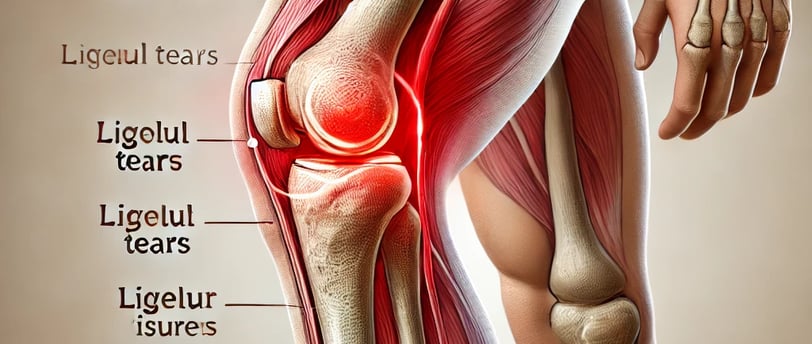MOVEMENT IS MEDICINE, ADD LIFE TO YEARS!
Understanding Knee Pain: Causes, Treatment, and Prevention
This article describes about common knee pains & how you can manage with this.
D. Akash Roy (PT)
7/24/20242 min read


Knee pain is a common complaint affecting people of all ages. Whether you're an athlete, a busy professional, or a senior citizen, knee pain can significantly impact your daily activities and quality of life. As a physiotherapist, I often encounter patients seeking relief from knee pain, and I’m here to guide you through understanding its causes, treatment options, and ways to prevent it.
Causes of Knee Pain
Knee pain can stem from various factors, including injuries, overuse, and medical conditions. Here are the most common causes:
1. Injuries
Ligament Tears: The ACL (anterior cruciate ligament) and MCL (medial collateral ligament) are commonly injured during sports or accidents.
Meniscus Tears: Sudden twisting movements can cause these cartilage injuries.
Patellar Tendinitis: Also called jumper’s knee, this condition is common among athletes.
2. Overuse
Runner’s Knee: Repeated stress on the knee joint, often seen in runners and cyclists, causes pain around the kneecap.
Iliotibial Band Syndrome: Tightness in the IT band can lead to pain on the outside of the knee.
3. Medical Conditions
Osteoarthritis: A degenerative condition where the cartilage in the knee wears down.
Rheumatoid Arthritis: An autoimmune disease causing inflammation in the knee joint.
Bursitis: Inflammation of fluid-filled sacs in the knee due to repetitive motions.
How Physiotherapy Can Help
Physiotherapy is one of the most effective ways to manage knee pain, providing non-invasive and long-lasting relief. Here’s how:
1. Pain Management
Modalities: Techniques like ultrasound, TENS, or heat/cold therapy can reduce pain and inflammation.
Manual Therapy: Hands-on techniques to improve mobility and relieve stiffness.
2. Strengthening and Stretching
Targeted exercises strengthen the muscles supporting the knee (quadriceps, hamstrings, glutes).
Stretching improves flexibility, reducing strain on the knee joint.
3. Correcting Biomechanics
Assessing and correcting posture, walking patterns, or sports techniques can reduce undue stress on the knee.
4. Recovery from Injuries
Tailored rehabilitation plans help patients regain strength, mobility, and confidence after surgery or injuries.
Preventing Knee Pain
Prevention is always better than cure. Adopt these habits to protect your knees:
1. Maintain a Healthy Weight
Excess body weight increases stress on the knees, leading to quicker wear and tear.
2. Strengthen Your Muscles
Regular strengthening exercises for the legs can stabilize the knee joint and reduce injury risks.
3. Warm-Up and Cool Down
Before and after workouts, stretch and perform light exercises to prepare your joints and muscles.
4. Choose the Right Footwear
Properly fitting shoes with good arch support can prevent imbalances that affect the knees.
5. Modify Activities
Avoid activities that cause knee strain. Learn proper techniques for exercises like squats and lunges.
When to See a Physiotherapist
While minor knee pain can improve with rest and home care, consult a physiotherapist if you experience:
Persistent pain lasting more than a few weeks.
Swelling, stiffness, or redness around the knee.
Difficulty walking or bearing weight on the knee.
A Physiotherapist specialized in treating knee pain can help you move pain-free and live a healthier, more active life, If you are struggling with knee pain.
Stay strong, stay active!
Roy Physiocare
Your A to Z Physiotherapy Solution
© 2024 Roy Physiocare. All rights reserved.


/
Call us:
